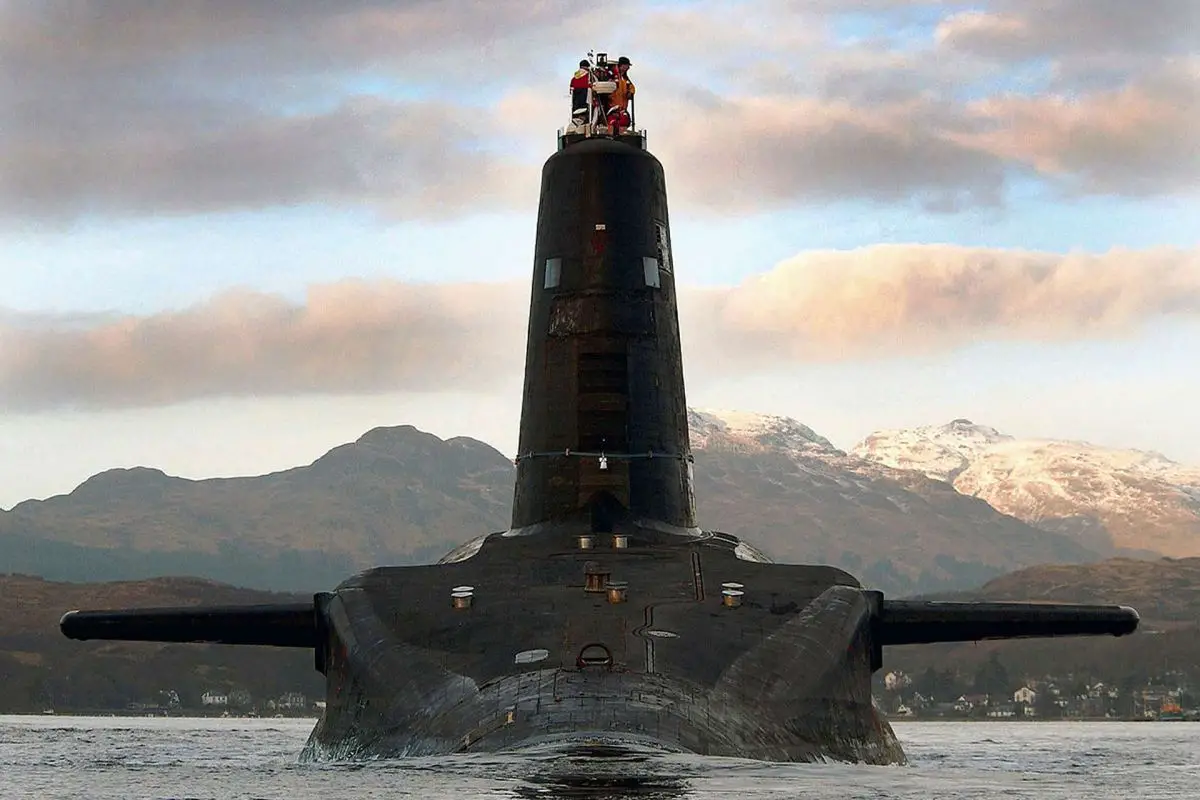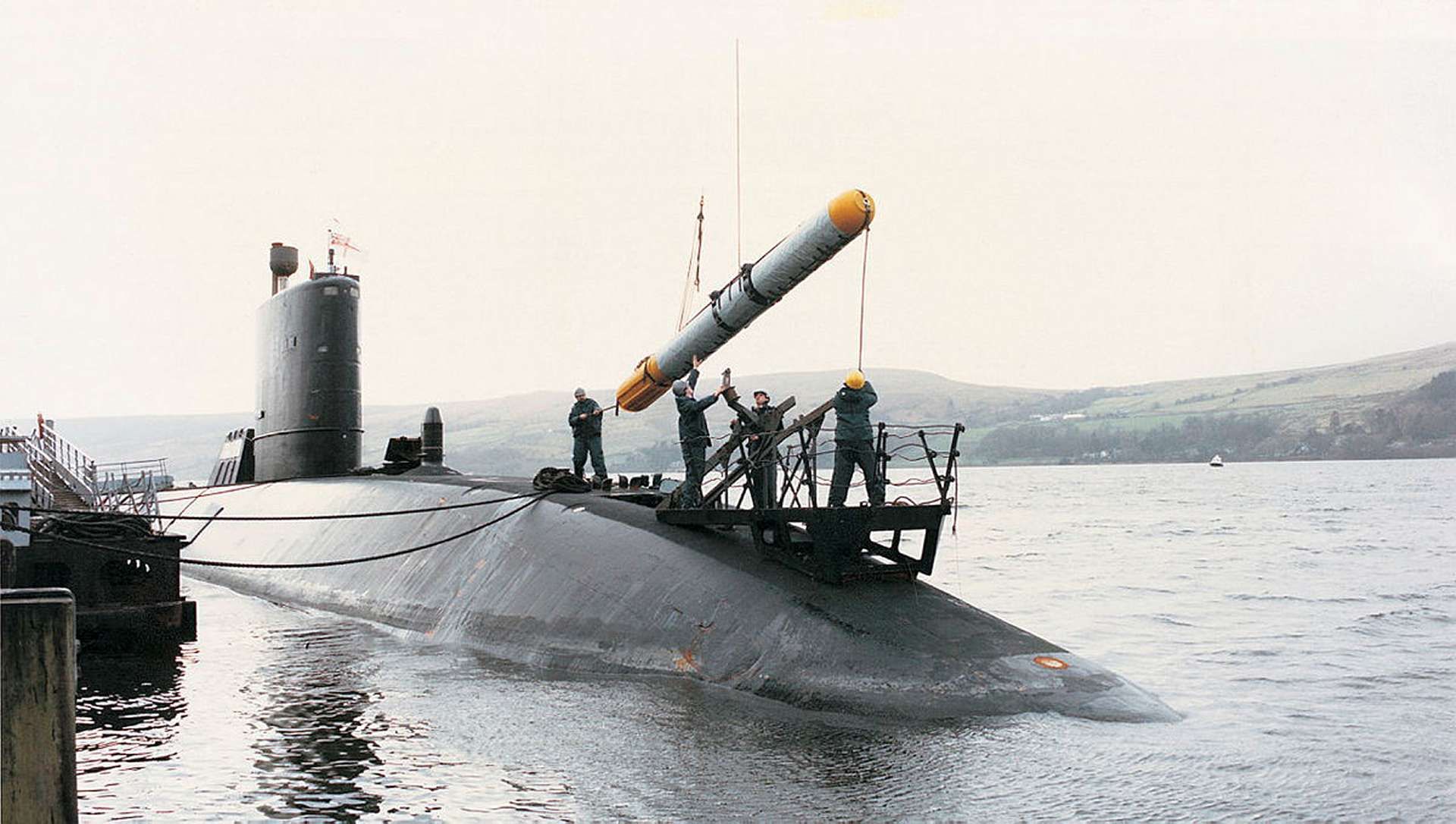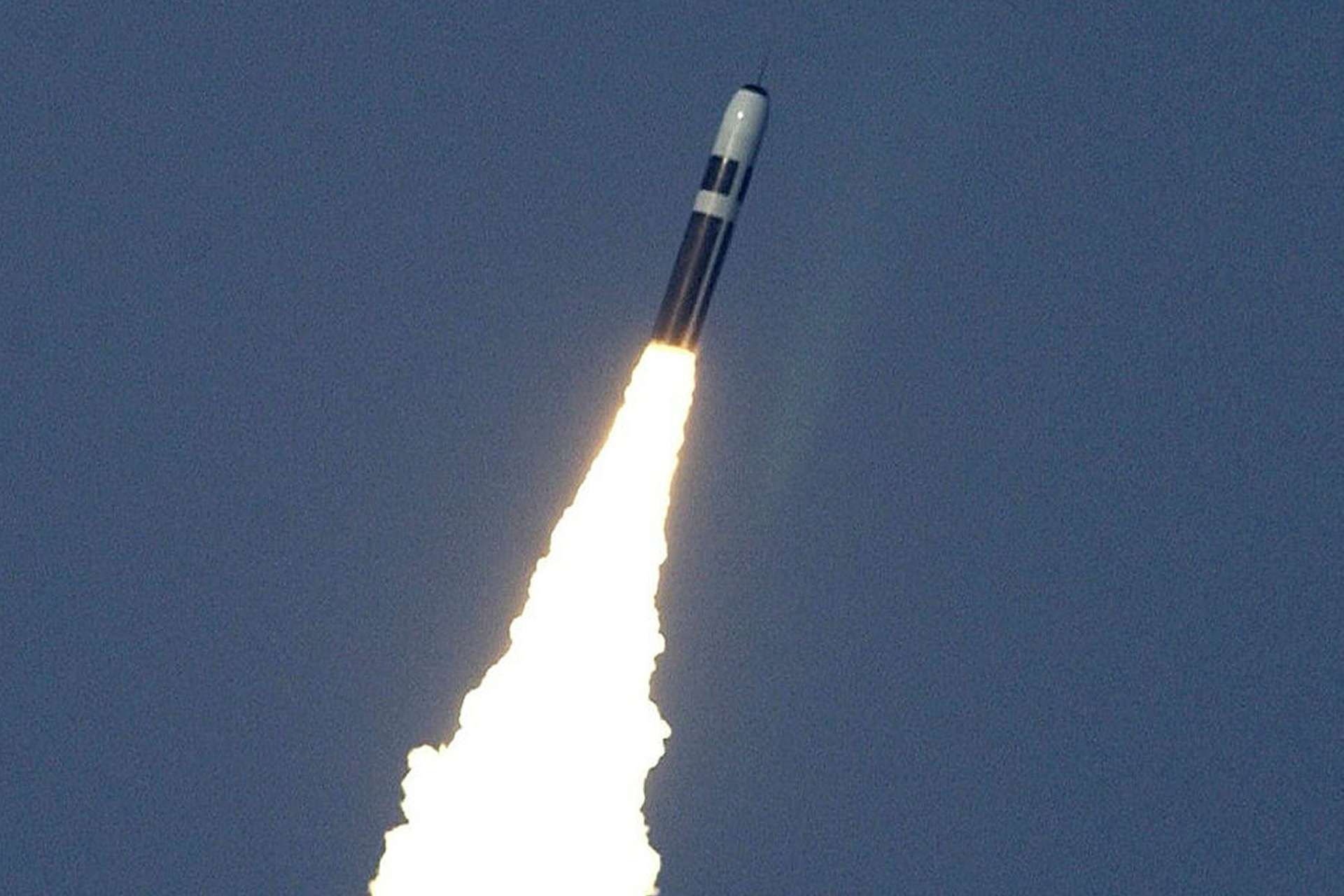Breaking News
British Navy successfully tests Spearfish Mod 1 torpedo on Vanguard-class submarine.
On July 31, 2024, the British Royal Navy announced that it successfully conducted Sea Acceptance Testing (SAT) of the latest version of the Spearfish torpedo, known as Spearfish Mod 1, on board a Vanguard-class submarine. The SAT took place over three days off the coast of Scotland, marking the first instance of the next-generation Spearfish being tested on a Vanguard-class nuclear-powered ballistic missile submarine. This testing ensures that the Royal Navy's submarines remain equipped with modern torpedoes, maintaining their combat readiness to address contemporary threats.
Follow Army Recognition on Google News at this link

The Sea Acceptance Testing (SAT) took place over three days off the coast of Scotland, marking the first instance of the Spearfish Mod 1 torpedo being tested on a Vanguard-class nuclear-powered ballistic missile submarine. (Picture source: British MoD)
The successful trials indicate that these submarines can now meet current maritime threats while at sea. The trials involved the torpedo engaging both surface and submerged targets, allowing the crew to operate the new weapon, test its firing capabilities from the submarine's combat system, and confirm command and control over the weapon.
This successful testing means that both the Royal Navy’s Astute-class and Vanguard-class submarines have now completed trials for the new Spearfish torpedo. The Spearfish has been in use for nearly three decades, capable of destroying various maritime threats, including frigates, destroyers, large warships, and hostile submarines. Commodore Chris Goodsell, Senior Responsible Owner for the program and Deputy Director Submarines, emphasized the importance of these trials, stating, "These firings continue to be a major step in ensuring the Royal Navy’s Spearfish torpedoes remain ready to face the latest threats, with cutting-edge technology at the forefront of the weapon’s success." He also acknowledged the efforts of teams from Navy Command, the Submarine Delivery Agency, DE&S, and industry partners.
The Spearfish torpedo, developed by GEC-Marconi Underwater Systems (now BAE Systems Underwater Systems), is a heavyweight torpedo deployed by the Royal Navy for both anti-submarine warfare (ASW) and anti-surface warfare (ASuW). Entering service in 1992, the torpedo can be guided by wire or autonomous active/passive sonar. The torpedo is 21 inches in diameter, 7 meters long, and weighs around 1,850 kg. It can achieve speeds up to 80 knots (92 mph) and has an operational range exceeding 30 nautical miles. The warhead, a 300 kg aluminized PBX explosive, can detonate on contact or through an acoustic proximity fuse, optimizing damage through under-keel explosions against submarines and surface ships.

The Spearfish is a heavyweight torpedo deployed by the Royal Navy for both anti-submarine warfare (ASW) and anti-surface warfare (ASuW). (Picture source: British MoD)
The Spearfish Mod 1 is an upgraded version of the original Spearfish torpedo, developed through a £270 million program initiated in 2009 to maintain its effectiveness as the primary conventional weapon of the Royal Navy's submarine fleet. The upgrade project, started in 2010, aimed to enhance virtually every aspect of the torpedo, especially given the current limited anti-ship weaponry in the British surface fleet.
Key improvements in the Mod 1 include an advanced homing system and a high-bandwidth fiber-optic data link, which allows the torpedo to be wire-guided by commands from the submarine's combat system. This command wire, capable of extending up to at least 30 km, permits changes in target, depth, and range restrictions, and enables it to ignore countermeasures. The submarine's sonar suite, being more sensitive and discerning than the torpedo's, enhances guidance accuracy. If the wire is severed, the torpedo will continue its mission autonomously based on the last programmed parameters and can use its active sonar if necessary.
The Mod 1 uses more modular components for easier maintenance and future upgrades. The warhead has been replaced with a safer insensitive munition from TDW, which is resistant to shock, blast, heat, and fire. Additionally, the dual-fuel Otto/HAP system in the gas turbine engine has been replaced by a single Otto II fuel cell, providing safer and more reliable propulsion. Extensive deep-water trials have validated these improvements, and the Mod 1 is set to be fully operational by 2025, with an expected service life extending into the 2050s.

The Vanguard-class submarines are a class of nuclear-powered ballistic missile submarines (SSBNs) operated by the Royal Navy and are the current sole platforms for the United Kingdom's nuclear weapons. (Picture source: British MoD)
The Vanguard-class submarines are a class of nuclear-powered ballistic missile submarines (SSBNs) operated by the Royal Navy and are the sole platforms for the United Kingdom's nuclear weapons after the decommissioning of the Royal Air Force's WE.177 free-fall thermonuclear weapons in 1998. Introduced in the 1990s, they were designed to replace the Polaris-equipped Resolution-class. The class includes four submarines: HMS Vanguard, Victorious, Vigilant, and Vengeance. These submarines were constructed between 1986 and 1999 by Vickers Shipbuilding and Engineering (now BAE Systems Submarines) at Barrow-in-Furness. They are the largest submarines ever built for the Royal Navy, displacing nearly 16,000 tonnes, and were specifically designed to carry the UGM-133 Trident II ballistic missiles, which serve as the United Kingdom's nuclear deterrent.
The Vanguard-class submarines are powered by a Rolls-Royce PWR 2 nuclear reactor, which has double the service life of previous models and allows the submarines to circumnavigate the world 40 times without refueling. The submarines' propulsion system includes two GEC steam turbines linked to a single shaft pump-jet propulsor, providing a maximum submerged speed of over 25 knots. Each submarine is armed with 16 Trident II D5 missiles, although current operational practices typically involve loading fewer missiles. The Trident missiles are equipped with multiple independently targetable reentry vehicles (MIRVs), capable of carrying nuclear warheads to targets over 7,000 kilometers away. In addition to ballistic missiles, these submarines are also equipped with Spearfish torpedoes for defense against underwater and surface threats.
The Vanguard-class submarines are integral to the UK's continuous at-sea deterrent (CASD) strategy, ensuring that at least one submarine is always on patrol. These submarines are approaching the end of their operational life and are set to be replaced by the new Dreadnought-class submarines starting in the early 2030s. The transition to the Dreadnought-class will maintain the Trident missile system, ensuring the continuation of the UK's strategic nuclear deterrent capabilities.

Each submarine is armed with 16 Trident II D5 missiles, although current operational practices typically involve loading fewer missiles. (Picture source: British MoD)


























